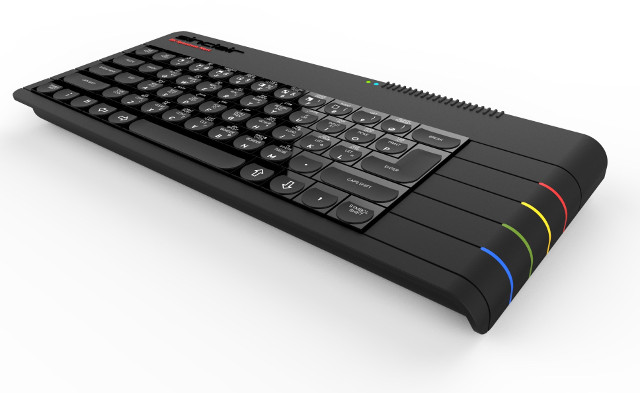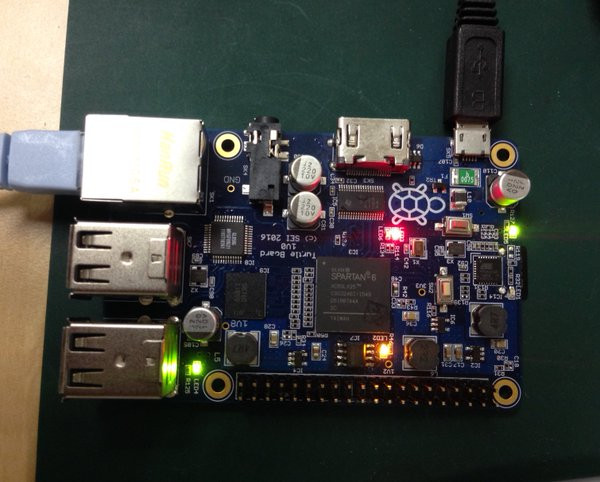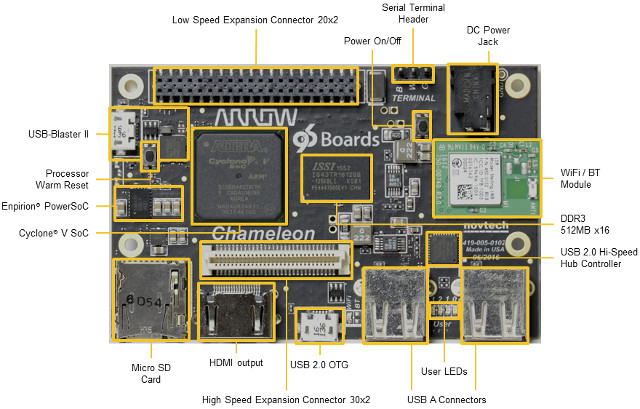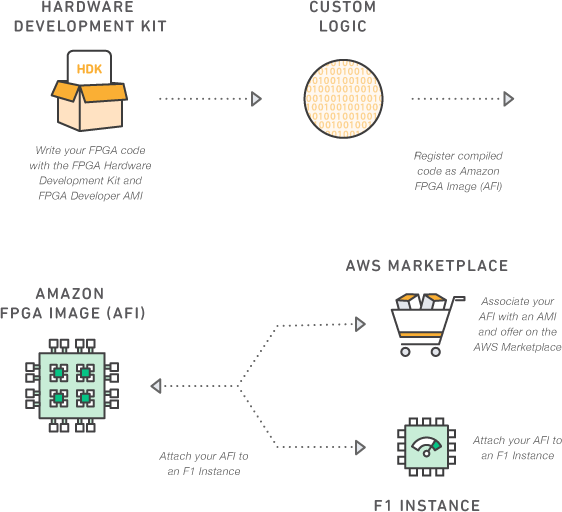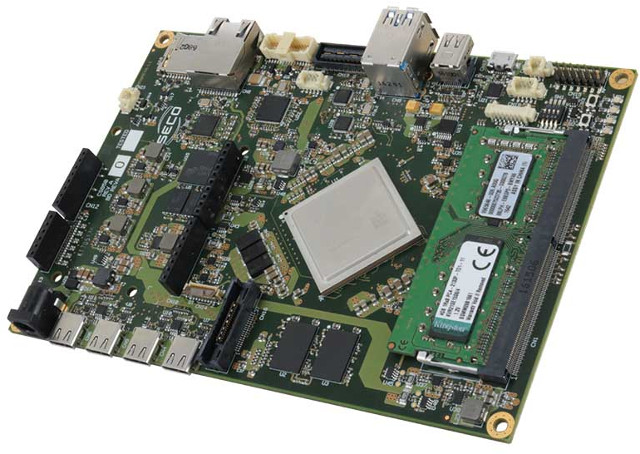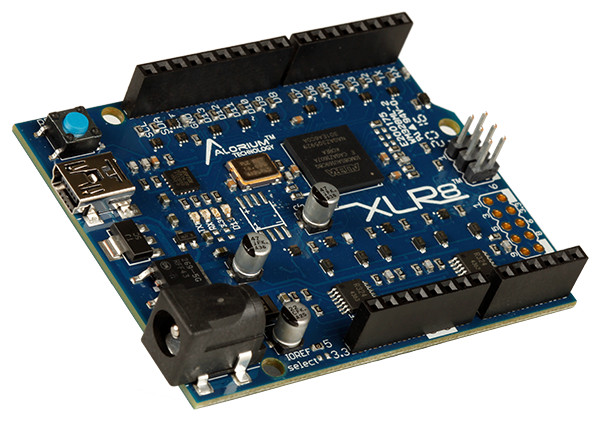ZX Spectrum keyboard computer was launched in April 1982 in the United Kingdom, and 35 years later, a team of developers has now been working on ZX Spectrum Next somewhat resuscitating ZX Spectrum by emulating Z80 processor in a Xilinx FPGA, using an optional Raspberry Pi Zero board as an accelerator, and adding some modern features like HDMI output and WiFi. While the case is only a 3D rendering for now, they have a working board prototype with the following specifications: FPGA – Xilinx Spartan-6 FGPA emulating Z80 processor in 3.5Mhz and 7Mhz modes System Memory – 512KB RAM (expandable to 1.5MB internally and 2.5MB externally) Storage – SD Card slot, with DivMMC compatible protocol used in the original ZX Spectrum Video Hardware sprites, 256 colours mode, Timex 8×1 mode etc. Output: RGB, VGA, HDMI Audio – 3x AY-3-8912 audio chips with stereo output + FM sound Networking – Optional […]
Embedded Systems Conference 2017 Schedule – May 3-4
The Embedded Systems Conference 2017 will take place over two days in Boston, US on May 3-4, and the organizers have published the schedule of the event. Even if you’re not going to attend, you’ll often learn something or find new information by just checking out the talks and abstracts, so I’ve created my own virtual schedule with some of the most interesting sessions. Wednesday, May 3rd 08:00 – 08:45 – Combining OpenCV and High Level Synthesis to Accelerate your FPGA / SoC EV Application by Adam Taylor, Adiuvo Engineering & Training Ltd This session will demonstrate how you can combine commonly used Open source frameworks such as OpenCV with High Level Synthesis to generate a embedded vision system using FPGA / SoC. The combination of OpenCV and HLS allows for a much faster algorithm development time and consequently a faster time to market for the end application. 09:00 – 09:45 […]
Turtle Board is a Raspberry Pi 2 Like FPGA Board for J-Core J2 Open Source SuperH SH2 SoC
J-core J2 is an open source processor and SoC design implemented in VHDL, and using SH2 instruction set found in some Renesas (previously Hitachi) micro-controllers. The code available royalty free under a BSD license, and it’s also patent-free since all SH2 related patents expired expired in October 2014. The developers used to run the code on Xilinx Spartan 6 based Numato Mimas v2 board since it was cheap ($50) and mostly did the job. “Mostly”, because it still lacked Ethernet, capability for SMP and the serial port was slow, so they decided to design their own Turtle Board to address those issues. Turtle Board preliminary specifications: FPGA – Xilinx Spartan 6 LS25 or LS45 FPGA MCU – 8-bit Atmel MCU for load/update flash at power on. Storage – micro SD slot, 8MB SPI flash System memory – 256 MB RAM Video & Audio Output – HDMI and AV jack Connectivity […]
Arrow Chameleon96 Board To Feature Intel Altera Cyclone V SE FPGA + ARM SoC in 96Boards Form Factor
Embedded World 2017 will start in about one week, and take place in March 14 – 16 in Nuremberg, Germany, so we can expect interesting embedded news coming soon. Arrow has written a blog post with plans to announce three 96Boards at the event: Meerkat based on NXP i.MX 7Dual, Chameleon96 based on Intel/Altera Cyclone V FPGA + ARM SoC, and Systart Oxalis 96Boards EE board powered by NXP LS1020A single core ARM Cortex A53 SoC. I’ll start with Chameleon (Chameleon96) today, as it’s the first with FPGA fabric, and I could find some technical details and photos about the board. Chameleon96 board specifications: SoC – Intel PSG / Altera Cyclone V SE 5CSEBA6U19I7N with a dual core ARM Cortex A9 processor @ up to 800 MHz and FPGA fabric with 110K Logic Elements Chips, Ports and Features connected to FPGA: Integrated USB-Blaster II JTAG cable Configuration sources: SD Card, […]
Amazon EC2 F1 Instances Put Xilinx Virtex Ultrascale+ FPGA Boards into the Cloud
We’ve covered several board and modules based on Xilinx Zynq Ultrascale+ MPSoC such as the AXIOM Board and Trenz TE0808 SoM, both featuring ZU9EG MPSoC, with systems selling for several thousands dollars. But I’ve been informed you may not need to purchase a board to use Virtex UltraScale+ FPGAs, which are different from Zynq UltraScale+ since they lack the ARM CPU & GPU and normally feature a more capable FPGA, as last November, Amazon launched a developer preview of F1 instances giving access to this type of hardware from their cloud. That’s the FPGA hardware you’ll be able to access from one F1 instance: Xilinx UltraScale+ VU9P manufactured using a 16 nm process. 64 GB of ECC-protected memory on a 288-bit wide bus (four DDR4 channels). Dedicated PCIe x16 interface to the CPU. Approximately 2.5 million logic elements. Approximately 6,800 Digital Signal Processing (DSP) engines. Virtual JTAG interface for debugging. […]
Trenz Electronic TE0808 UltraSOM+ is a Xilinx Zynq Ultrascale+ ZU9EG System-on-Module
Xilinx Zynq Ultrascale+ ARM Cortex A53 + FPGA SoC have now started to show up in boards such as AXIOM Board based on Zynq Ultrascale+ ZU9EG. Price for the board has not been announced, and while a similar Xilinx development kit goes for close to $3,000, some people are expecting the board to sell for $400 to $600. Since the price of FPGA vary a lot from a few dollars to $40,000 for the top end chips, I decided to find pricing info about Xilinx Zynq Ultrascale+ MPSoCs which lead me to Trenz Electronic TE0808 system-on-module, which was unveiled in May last year, and I’ll cover in the second part of this post, after – hopefully quickly – describing Zynq Ultrascale+ family and nomenclature, and addressing the price “issue”. First, there are three sub-families within Zynq Ultrascale+ MPSoC portfolio: CG models with 2x Cortex A53, 2x Cortex R5, FPGA fabric […]
EU funded AXIOM Board is Powered by Xilinx Zynq UltraScale+ FPGA + ARM SoC
Back in 2015, Xilinx unveiled Zynq Ultrascale+ MPSoC combining ARM Cortex A53 & Cortex R5 cores, a Mali-400MP2 GPU, and UltraScale FPGA, and the company recently launched ZCU102 Evaluation Kit based on the SoC, which sells for just under $3,000. But if you are based in the European Union, you’ll be glad to learn about 4 millions Euros of your taxes have been spent to design a board based on the same MPSoC family as part of the AXIOM project, which was developed in collaboration with European universities and companies with the “aim of researching new software/hardware architectures for Cyber-Physical Systems (CPS) to meet the expectations” in terms of computational power, energy efficiency, scalability through modularity, easy programmability, and leverage of the best existing standards at minimal costs. AXIOM (Agile, eXtensible, fast I/O Module) board’s key specifications: SoC – Xilinx Zynq Ultrascale+ ZU9EG MPSoC with four ARM Cortex A53 cores […]
Alorium XLR8 Arduino Compatible Altera MAX 10 FPGA Board Sells for $75
We already have a fair choice of boards with Arduino compatible headers powered by an FPGA with options such as $99 Digilent Arty (Xilinx Artix-7 FPGA), FleaFPGA (Lattice FPGA), Papillio DUO (Xilinx Spartan 6), or Snickerdoodle + shieldBuddy (Xilinx Zynq-7010/20). There’s no yet another choice with Alorium Technology XLR8 Arduino UNO like board powered by Altera MAX10 FPGA. XLR8 board specifications: FPGA – Altera MAX 10 FPGA MCU – Atmel/Microchip ATmega328 8-bit MCU Digital I/Os 5V inputs, 3.3V outputs 14x Digital I/O Pins 6x PWM Digital I/O Pins 6x Analog Pins Analog Inputs 5V tolerant Op-amp circuit emulates 0-5V behavior of the ADCs on the Arduino UNO Performance: 1 MHz; Resolution: 12-bit sustained Sample Rate: 154k samples/second Power Supply – 5V via USB or barrel connector Dimensions – Arduino UNO form factor The board is supported by Altera Quartus Prime Lite Edition, and programmable either via JTAG though a USB […]


